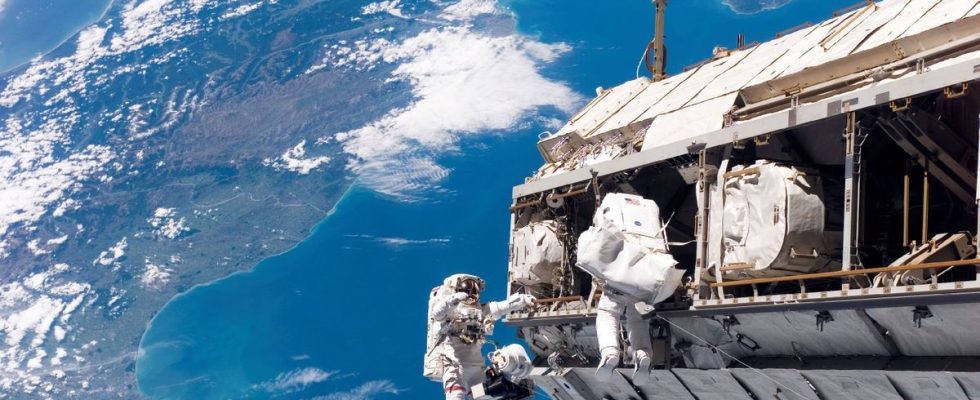Published on
Updated
Reading 3 min.
What if the solution to beating cancer was in space? The gravity-free universe where cells age more quickly has enabled “crazy progress”, according to NASA, which is working hard to treat the disease.
For astronaut Frank Rubio, wrapped in his petrol blue suit, “space is a unique place of research“. The forty-year-old took up residence there during a cancer research mission on the International Space Station (ISS), more than 400 kilometers above the Earth.
Not only do the cells age more quickly, which speeds up research, but their structures are also more “pure”. “They don’t clump together like they do on Earth, because of gravity. In space, they are suspended“, levitating thanks to microgravity, which allows better analysis of their molecular structures, explains NASA boss Bill Nelson, in an interview with AFP.
Seduced, the pharmaceutical giant Merck decided to carry out research on board the ISS on Pembrolizumab, an anti-cancer drug that patients today receive via intravenous infusions.
Its main asset is very complicated to transform into liquid. One solution remains to crystallize it, a common process for manufacturing drugs.
In 2017, Merck tried the experiment in space to see if crystals form better there than on Earth.
More efficient
Bill Nelson shows the results. Two pictures. On the first, a transparent and blurry stain. On the second, a multitude of gray and clear dots. “We see that in the second photo, the one in space, the crystals are smaller and more uniform, they form better“, reveals the former astronaut.
Thanks to this more “pure” training, we are moving towards “manufacturing a drug so that it can be administered as an injection in a doctor’s office instead of tedious intravenous chemotherapy for hours and hours in the hospital“, rejoices the NASA administrator.
Merck has identified techniques to mimic the effects of these crystals on Earth and is seeking to develop a drug that can be administered by injection and kept at room temperature.
But reproducing them is not easy and research may take years before making Pembrolizumab more accessible.
“We use the properties of space to set the limits of cancer“, summarizes Kimryn Rathmell, director of the National Cancer Institute, an organization attached to the American government.
Although scientific research on cancer in space is more than 40 years old, it has become “revolutionaries” in recent years, says Bill Nelson.
They “greatly help doctors and patients make the right decisions about treatment options“, underlines Annette Burkhouse, head of the medical branch of the biotechnology company Promega.
Objective moon
US President Joe Biden has made it his hobby horse with the “Cancer Moonshot” initiative, echoing John Kennedy’s speech more than 60 years ago, when the former leader wanted to see Americans land on the moon one day.
The goal: to halve the cancer death rate in the next 25 years and avoid four million deaths according to White House figures, the second cause of death in the country after heart disease.
Such an intimate fight for the Democrat who, then vice-president of Barack Obama, lost his son Beau to brain cancer in 2015.
“We all know someone, often someone we love, who has battled this horrible disease. As during the race for the Moon, we believe that our technology and our scientific community are capable of doing the impossible to eliminate cancer as we know it“, assures Xavier Becerra, the American Minister of Health, during a press conference Thursday at NASA headquarters in Washington.
An ambition tarnished by the 25 billion dollars allocated by Congress to the Space Agency for 2024, i.e. 2% less than the previous year and well below the budget desired by the White House.
Sweeping away political dissensions, researcher Kimryn Rathmell is convinced that “the capacity of space to make us dream resides in each of us“. And, she assures, “it can save lives“.
